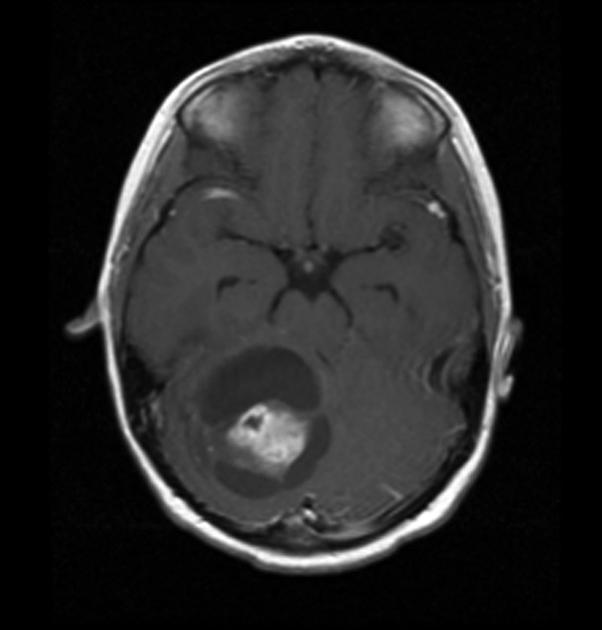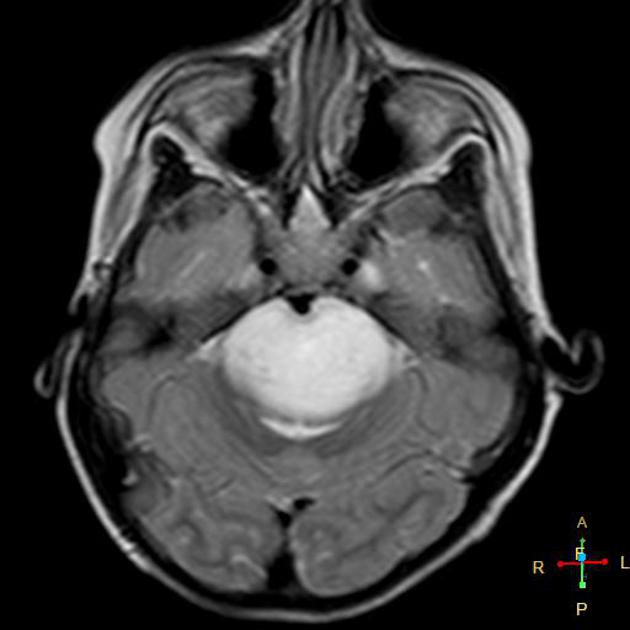Posterior fossa astrocytoma
Citation, DOI, disclosures and article data
Citation:
Gaillard F, Yap J, Bell D, et al. Posterior fossa astrocytoma. Reference article, Radiopaedia.org (Accessed on 29 Mar 2025) https://doi.org/10.53347/rID-5898
Permalink:
rID:
5898
Article created:
Disclosures:
At the time the article was created Frank Gaillard had no recorded disclosures.
View Frank Gaillard's current disclosures
Last revised:
Disclosures:
At the time the article was last revised Joshua Yap had no financial relationships to ineligible companies to disclose.
View Joshua Yap's current disclosures
Revisions:
7 times, by
6 contributors -
see full revision history and disclosures
Systems:
Synonyms:
- Posterior fossa astrocytomas
Posterior fossa astrocytomas, those arising either from the cerebellum or from the brainstem are most frequently seen in children. Approximately 60% of all pediatric astrocytomas are found in the posterior fossa (20% brainstem, 40% cerebellum).
Many types of astrocytoma are found in the posterior fossa of children, however, two make up the majority of cases:
In adults, high-grade astrocytomas with piloid features are also encountered.
References
- 1. A. James Barkovich, Charles Raybaud. Pediatric Neuroimaging. (2018) ISBN: 9781496337207
Incoming Links
Related articles: Astrocytic tumour
-
astrocytic tumors
- WHO classification of CNS tumors
- WHO grading of CNS tumors
- VASARI MRI feature set
- diffuse astrocytoma grading
- grade I:
- grade II:
- chordoid glioma of the third ventricle
-
low-grade diffuse astrocytoma
- fibrillary astrocytoma (no longer recognized)
- protoplasmic astrocytoma (no longer recognized)
- gemistocytic astrocytoma
- oligoastrocytoma (no longer recognized)
- pilomyxoid astrocytoma
- pleomorphic xanthoastrocytoma
- grade III
- anaplastic astrocytoma (no longer recognized)
- anaplastic oligoastrocytoma (no longer recognized)
- anaplastic pleomorphic xanthoastrocytoma (no longer recognized)
- grade IV:
-
glioblastoma (GBM)
- glioblastoma IDH wildtype
- glioblastoma IDH mutant
- glioblastoma NOS
- variants
- diffuse midline glioma H3 K27M–mutant
-
glioblastoma (GBM)
- glioblastoma vs cerebral metastasis
- radiation-induced gliomas
- gliomatosis cerebri (growth pattern)
- specific locations
- treatment response
- prognostic genetic markers






 Unable to process the form. Check for errors and try again.
Unable to process the form. Check for errors and try again.